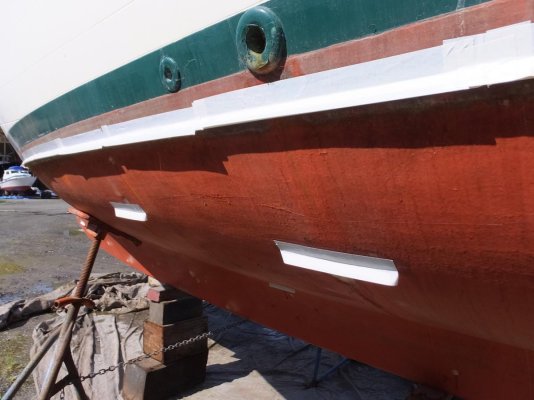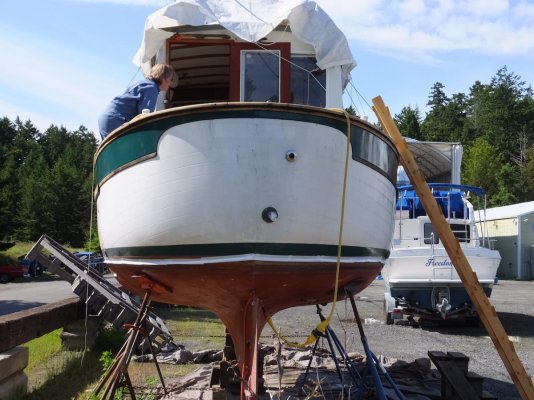Al
Guru
- Joined
- Apr 1, 2012
- Messages
- 2,206
- Location
- usa
- Vessel Name
- 'SLO'~BELLE
- Vessel Make
- 1978 Marben-27' Flybridge Trawler(extended to 30 feet) Pilothouse Pocket Cruiser[
Could a big 6cyl Perkins sitting very low in a 28' trawler style boat be considered as ballast when some boats the same had small 4cyl motors + 300kg ballast ?
I would say yes. It is on the center line. It lays near or below the CG. We replaced our 800# (+-) Perkins 4-154 including 3:1 gear with a 1400#(+-) Perkins 4-236 and 2;1 gear. We had added prior to the engine swap, several hundred # of lead ingots. We felt satisfied at that time with the results. After adding the swapped engine, the stability became even more 'solid' during rolling motion. Solid, like heavy if you can picture.
Al-27'Marben Pocket CRUISER
Last edited:

 Hi AKDoug- sometime from hearing from you! Any chance you can locate some junk lead in your area? If you can and have access to a 'rosebud' welding kit, you could create bread pan size ingots of near 30# using bread pans laced with aluminium foil (I think that would work) and place those where every you desire/(space). Then too, old boat zincs that are tossed away, while only about 2/3 the weight of lead, melted down can be easily stowed.
Hi AKDoug- sometime from hearing from you! Any chance you can locate some junk lead in your area? If you can and have access to a 'rosebud' welding kit, you could create bread pan size ingots of near 30# using bread pans laced with aluminium foil (I think that would work) and place those where every you desire/(space). Then too, old boat zincs that are tossed away, while only about 2/3 the weight of lead, melted down can be easily stowed. ....generic questions are only bested by the really important topics that are TOTALLY opinion questions....
....generic questions are only bested by the really important topics that are TOTALLY opinion questions....





